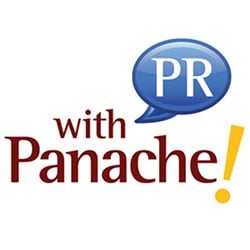One first-year teacher’s methodical process showed her what was working and what wasn’t—and helped her students read and comprehend better.
 I began my career as a first-grade teacher feeling confident that I had been well prepared to teach reading. I graduated from college with a reading endorsement and had maintained reading as a minor throughout the time it took me to complete two degrees. However, a few months into my first year as a teacher, I realized that I wasn’t as prepared as I’d thought. My experience is not uncommon. I have since trained teachers from Alaska to New Jersey—and many places in between—to teach foundational reading skills. During every training session, without fail, someone raises a hand and asks, “Why didn’t we learn this in college?”
I began my career as a first-grade teacher feeling confident that I had been well prepared to teach reading. I graduated from college with a reading endorsement and had maintained reading as a minor throughout the time it took me to complete two degrees. However, a few months into my first year as a teacher, I realized that I wasn’t as prepared as I’d thought. My experience is not uncommon. I have since trained teachers from Alaska to New Jersey—and many places in between—to teach foundational reading skills. During every training session, without fail, someone raises a hand and asks, “Why didn’t we learn this in college?”
How can we give teachers who are well past their pre-service days the necessary knowledge to build a solid, scientifically based foundation for teaching reading? Pointing fingers at those who teach pre-service teachers or rehashing the effects of policies and practices brought on by the reading wars will do nothing to help the students in our K–3 classrooms improve their reading ability. We can’t wait for every college of education to “figure it out” or for teachers to find time to read and understand every piece of research that has been conducted on effective reading instruction.
One thing we can do is engage teachers in applying the scientific method to their reading instruction. Doing so can empower teachers by increasing their professional knowledge of effective reading instruction. It can also provide an objective framework and a common language for teachers, administrators, and literacy coaches to use as they focus on students’ reading development. Here is one example of how I applied the scientific method to my reading instruction and how it influenced the way I taught my first graders to read.
Step 1: Observe
Throughout each day, teachers do a lot of observing. I observed that my students were not proficient enough at decoding words, and it was affecting their motivation to read.
Step 2: Ask Questions
The next step is to ask yourself questions based on your observations. One good question will help a teacher maintain focus on one thing at a time without becoming distracted or overwhelmed. For me, the question was “What am I missing in my reading instruction?”
Step 3: Research
The third step is to research possible answers to the question. Fortunately, I began teaching just after the National Reading Panel published their meta-analysis of the effectiveness of different approaches for teaching reading. The NRP identified five areas necessary for effective literacy instruction. I realized that I was lacking in the area of phonics instruction.
Step 4: Form a Testable Hypothesis
The next step is to form a hypothesis that can be tested and measured. The NRP found that effective phonics instruction is systematic, sequential, and explicit. Based on the research, I hypothesized that if I gave more explicit phonics instruction, my students’ ability to read would improve.
Step 5: Experiment
Without experimentation, it’s hard to know what works for certain. I changed my implicit, spontaneous approach to teaching decoding to explicit and intentional instruction using a sequence that I hoped would not overwhelm my students.
Step 6: Analyze the Data
In today’s schools, there never seems to be a lack of data. The challenge is knowing how to interpret all that information. It helps to consult with other teachers and reading experts. As I analyzed the running records of my students, I noticed that since I’d made my phonics instruction more explicit, students were reading more accurately and their comprehension was improving—even if it wasn’t at the rate that I’d hoped.
Step 7: Draw Conclusions
Conclusions not only help identify what works when teaching reading but can also help identify what doesn’t work. I concluded that teaching phonics explicitly had made a difference with my students. Conversely, my previous approach to teaching phonics did not work.
Step 8: Communicate Your Findings
In the world of science, findings are communicated anywhere from poster boards at science fairs to published articles in scientific journals. Sharing what I was learning with my colleagues resulted in improved reading proficiency across our whole grade level.
As a first-year teacher, applying basic principles of the scientific method to my reading instruction helped me improve the reading ability of my students. It also provided me with a solid foundation upon which I continue to build. I have since seen many teachers do the same. In the process, they have gained reliable, scientifically based, professional knowledge about teaching reading.
Stacy Hurst is a curriculum specialist for Reading Horizons and is a co-author of the Reading Horizons Discovery curriculum materials. Hurst taught first grade before becoming a literacy coach and reading specialist. She has extensive experience coordinating interventions for struggling readers in grades K-12 and has taught English language development classes to elementary students and adults.


